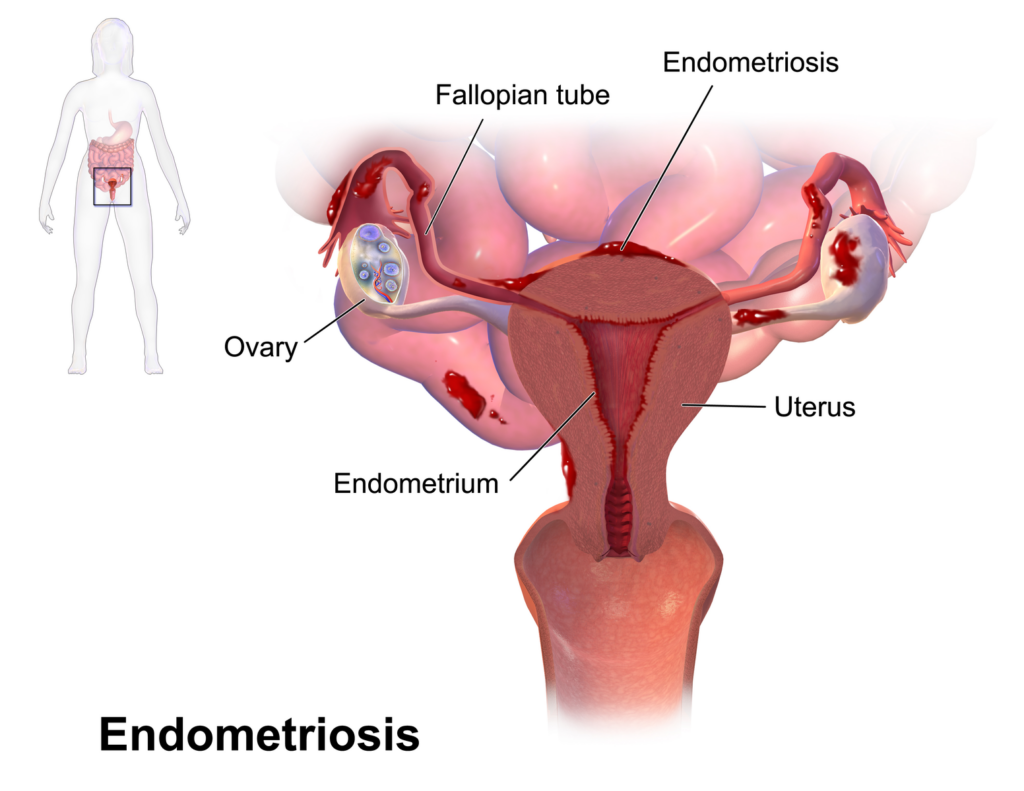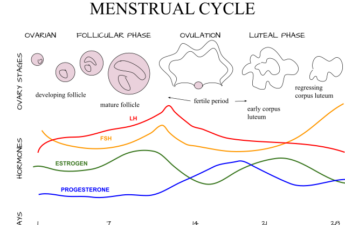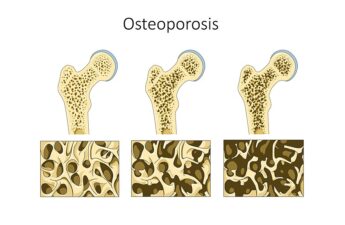
At a Glance
- Researchers found that women with certain types of severe endometriosis are at significantly increased risk of ovarian cancer.
- Further research in large, diverse populations is needed to confirm these findings and help guide improved ovarian cancer screening and prevention strategies.
By Brian Doctrow, Ph.D.
NIH Research Matters
A study suggests a link between certain endometriosis types and ovarian cancer risk. rocketclips / Adobe Stock
Endometriosis occurs when the type of tissue that lines the uterus grows outside the uterus. Common symptoms include pelvic pain and infertility. Recently, endometriosis has been associated with a heightened risk of ovarian cancer.
There are three main subtypes of endometriosis. Superficial endometriosis mainly occurs on the mucous membrane around the pelvic cavity. Deep infiltrating endometriosis affects organs near the uterus, like the ovaries, bladder, and bowels. Endometriomas are cysts that form within the ovaries. How these different subtypes are associated with cancer risk has not been well-studied.
A team of researchers led by Dr. Karen Schliep at the University of Utah examined the relationship between endometriosis subtypes and the risk of ovarian cancers. Results from the study, which was partly funded by NIH, appeared in JAMA on July 17, 2024.
The team used data from the Utah Population Database, which links various health records from more than 11 million people. They found more than 78,000 women from 18 to 55 years old with an endometriosis diagnosis in electronic health records. They compared these to a matched group in the database of almost 380,000 women without endometriosis. Between the two groups, nearly 600 women developed ovarian cancer, according to cancer registry records. Sociodemographic factors, reproductive histories, and surgical histories were also considered.
Women with endometriosis were diagnosed around age 36 on average. Overall, women with endometriosis had more than 4 times the risk of ovarian cancer as those without endometriosis. This translated into about 10 more cases per 10,000 women.
The risk varied with endometriosis subtype. Women with the more severe subtypes—deep infiltrating endometriosis and ovarian endometriomas—had the greatest risk. Their risk was more than 9 times that of women without endometriosis.
Much of the increased cancer risk in women with endometriosis was due to type I cancer, which tends to grow more slowly and cause fewer symptoms than type II cancer. Women with endometriosis were 7.5 times more likely to develop type I cancer than women without endometriosis. Among the women with the more severe endometriosis subtypes, the risk of type I cancer was almost 19 times greater than in women without endometriosis.
“This is important data for women to have as they’re weighing what kind of treatments they should maybe undergo to avoid any kind of disease down the road,” Schliep says. “I’m very passionate about giving women the right information and then having them be able to make shared decisions with their physician.”
Further study is needed to understand how specific types of endometriosis might give rise to different ovarian cancers. Such knowledge could lead to new approaches for prevention and treatment.
Related Links
- DNA Changes Linked to Endometriosis
- Most Ovarian Cysts May Not Need Surveillance
- Trying To Conceive After a Pregnancy Loss
- Period Problems: Fibroids, Endometriosis, and Other Issues
- Endometriosis
- Ovarian, Fallopian Tube, and Primary Peritoneal Cancer
- Cancer Stat Facts: Ovarian Cancer
References: Endometriosis Typology and Ovarian Cancer Risk. Barnard ME, Farland LV, Yan B, Wang J, Trabert B, Doherty JA, Meeks HD, Madsen M, Guinto E, Collin LJ, Maurer KA, Page JM, Kiser AC, Varner MW, Allen-Brady K, Pollack AZ, Peterson KR, Peterson CM, Schliep KC. JAMA. 2024 Jul 17:e249210. doi: 10.1001/jama.2024.9210. Online ahead of print. PMID: 39018030.
Funding: NIH’s National Cancer Institute (NCI), National Heart, Lung, and Blood Institute (NHLBI), and National Institute on Aging; University of Utah; Utah Department of Health and Human Services; US Centers for Disease Control and Prevention; Huntsman Cancer Foundation; Doris Duke Foundation; American Heart Association.


